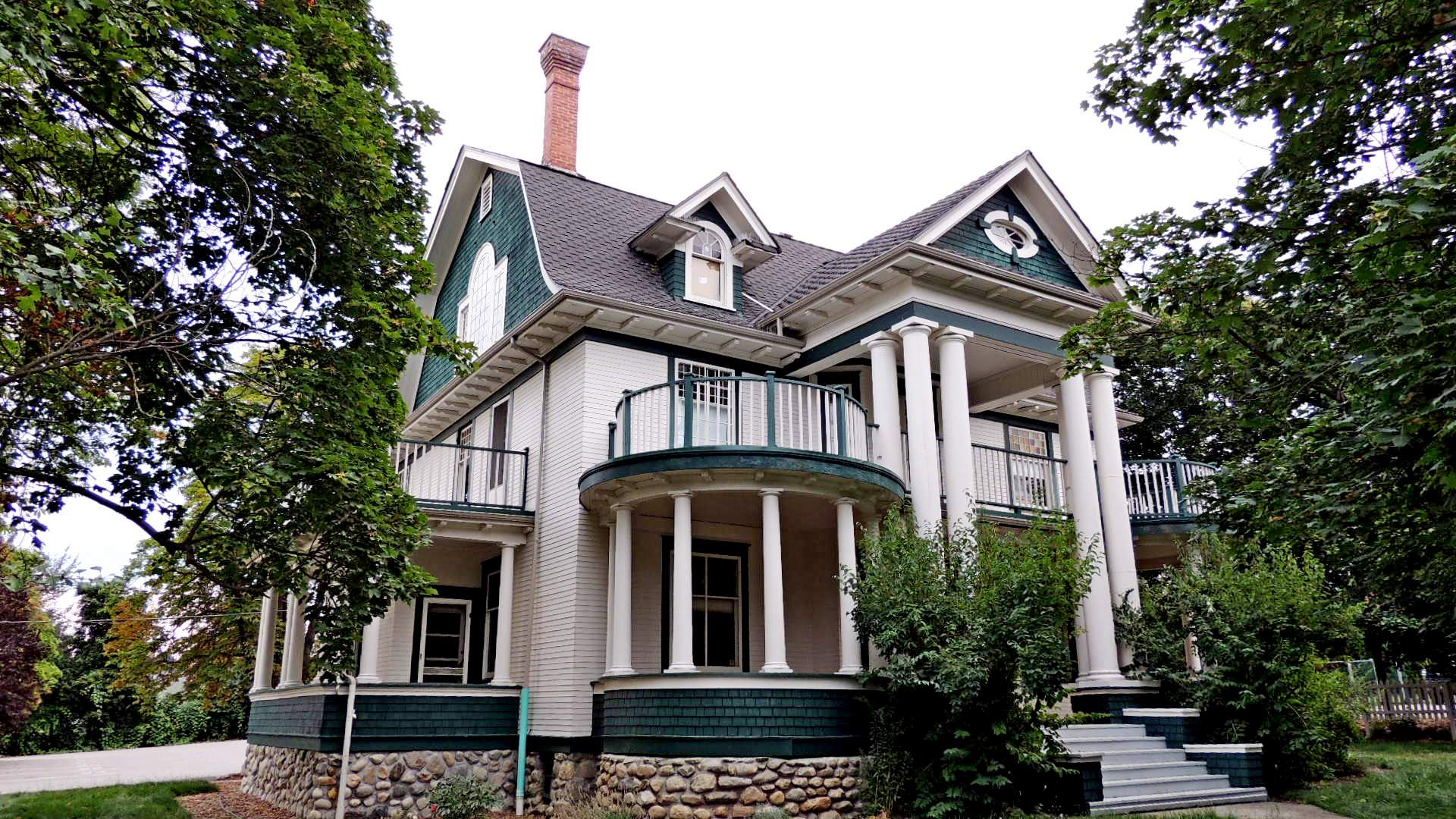|
 S.C. Smith House - Vernon, BC Posted by:  T0SHEA T0SHEA
N 50° 15.927 W 119° 15.298
11U E 339292 N 5570577
Completed in 1908 for S.C. Smith, prominent local businessman and sawmill owner, in 1956, 23 years after his death, the building became a convent for the Sisters of St. Ann. It has been home to the Vernon Community Music School since 1982.
Waymark Code: WMMBGM
Location: British Columbia, Canada
Date Posted: 08/26/2014
Views: 6
Smith House
1705 32nd Avenue
Description of Historic Place
The Smith House is a two-and-one-half-storey Dutch Colonial Revival house located at 1705 32nd Avenue on the East Hill in Vernon.
Heritage Value
The Smith House is valued for its association with a succession of owners and their contributions to the social and cultural life of Vernon. S.C. Smith (1849-1933) was a prominent businessman and civic leader in the 1890s and early 1900s. Born in Acton, Ontario, he established a lumber operation on Howe Sound in 1891 and the next year moved it to Vernon. Smith’s sash and door factory, which operated from the mid 1890s until Smith’s death, was the town’s largest employer and the source of most of the local building material. In 1894, it manufactured 17,000 doors. Smith had sawmills in Enderby and Naramata and a lumberyard in Penticton.
Mrs. Smith died before the house was finished, but Smith moved in and lived there with several family members. Upon Smith’s death, it was unoccupied until 1941, when Clement Smith (son) returned to lived there. In 1956, the Catholic Church bought it as a convent for the Sisters of St. Ann, who taught at St. James Catholic School. In 1981, the house was sold to the City of Vernon. The City designated the building as a municipal heritage site that same year. The City and the BC Heritage Trust contributed funds for its restoration, after which it was used as the headquarters for the BC Summer Games. The City sold the building to the Vernon Community Music School in 1982. The Music School created studios in the house and renovated the carriage house.
Smith was also active in civic and business affairs. He was a City Councillor for eight years, was a member of the hospital board for twenty years, was active in the Board of Trade, and was President of the local Liberal Association and President of the Yale-Cariboo Liberal Association. His sports interests included horse racing, lacrosse, hockey and curling.
The Smith House is also valued for its high quality of architectural design. Commissioned in 1905 and completed in 1908, at a cost of $13,000, a significant sum at the time, it is Vernon’s most significant Colonial Revival villa. A large frame structure, the house is side-gabled with a gambrel roof with wide overhanging eaves decorated with modillions. A two-storey portico, with Tuscan pillars and matching semi-circular porches on either side, dominates the front façade. Other fine design details include bay windows, an attached one-storey conservatory, balustrades above the porches, cedar siding, and fieldstone foundation. Interior features include large rooms finished with plaster, fir and hardwoods. There is a ballroom with a sprung floor in the attic. In the rear is a fine carriage house with a gambrel roof. The house was a significant project that spurred growth in the new Lakeview subdivision.
The house design is likely from an American pattern book. The 1892 World's Fair in Chicago popularized the Colonial gambrel form with Beaux Arts detailing. The Massachusetts Pavilion was built in this style and has many features that are echoed in the Smith House design.
The Smith House is also notable for its association with the architect R.B. Bell and the builder T.E. Crowell. Bell was a Scot who moved to Vernon in 1891. He was self-trained and was one of the first architects registered in BC. His earliest houses were in the Queen Anne Revival style, including the Megaw, Billings, and Carew houses, completed in the 1890s. By the time the Smith House was commissioned, Bell was in partnership with R.O. Constant and had broadened his work to include commercial and institutional buildings and newer residential styles, based on Colonial Revival motifs. The now-demolished O’Neal house on 32nd Street was another Bell house in the Colonial Revival style, which shared many of the Smith house’s features.
From the Vernon Heritage Register

Type of Marker: Cultural

Type of Sign: Historic Site or Building Marker

Describe the parking that is available nearby: Street and parking lot at rear of building

What Agency placed the marker?: City of Vernon

|
Visit Instructions:
When entering a new log for visiting a waymark please provide a picture of your visit to the location and if you have an interesting alternate area or sign photo include that.
Please include any thoughts or historic information about the area that the marker may represent.
|